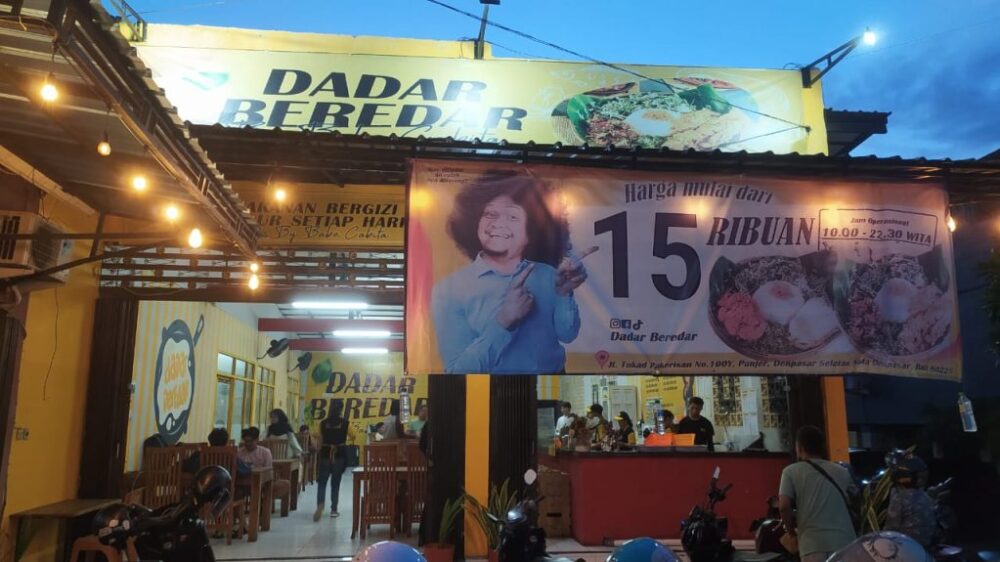DadarBeredar Bekasi: A Culinary Journey Through Flavors
Origin and History
DadarBeredar, a traditional Indonesian dish, has its roots deeply intertwined with the cultural tapestry of Indonesia. Originating from West Java, particularly the Bekasi region, this culinary delight showcases the rich agricultural diversity and culinary heritage of the area. The name “DadarBeredar” translates to “spreading pancake,” an homage to its unique cooking method where a thin batter is spread across a hot surface. The popularity of DadarBeredar blossomed throughout the archipelago, evolving into various local adaptations while retaining its core flavors.
The Ingredients
The core ingredients of DadarBeredar are simple yet versatile, emphasizing the lush produce of the region. The primary base consists of:
- Rice Flour: This essential ingredient gives DadarBeredar its characteristic texture and slightly chewy consistency.
- Coconut Milk: Adding richness and creaminess, coconut milk also infuses a hint of sweetness into the dish.
- Pandan Leaf Extract: Known for its distinct aroma and vibrant green color, pandan leaf extract elevates the dish with its fragrance.
- Sugar: Typically palm sugar is used, offering a unique sweetness that complements the dish beautifully.
- Salt: Just a pinch enhances the flavors, balancing the sweetness of the sugar and richness of the coconut.
Variations of the dish often incorporate additional flavors, such as chocolate, durian, or even savory fillings like shredded chicken or vegetables, showcasing the creativity and culinary diversity of Indonesian cuisine.
Preparation Method
The preparation of DadarBeredar involves a fascinating blend of art and technique:
-
Creating the Batter: Start by mixing rice flour with coconut milk, sugar, salt, and water. The batter should achieve a smooth, pourable consistency, allowing it to flow easily on a hot skillet.
-
Infusing Flavors: Add a few drops of pandan leaf extract into the batter for color and aroma. This step is crucial in elevating the dish, providing a lush green hue and an inviting fragrance.
-
Cooking: Heat a flat non-stick pan over medium heat. Lightly grease the pan with oil or butter. Pour a ladleful of batter onto the heated surface, gently spreading it outwards in a circular motion. Cook until the edges start lifting, and the surface appears set and slightly glossy, usually requiring about 2-3 minutes.
-
Filling: Once cooked, your pancake is ready for fillings. Here’s where creativity thrives—fill with shredded coconut mixed with palm sugar, chocolate sprinkles, or even fresh fruits.
-
Folding and Serving: Fold the pancake in half or roll it up, enhancing the presentation. Serve warm, allowing the flavors to resonate with every bite.
Cultural Significance
DadarBeredar is not merely a dish—it is a celebration of Indonesian culture and communal spirit. Often found at local markets, street stalls, and during family gatherings or festivals, this dish symbolizes togetherness. The act of making DadarBeredar invites participation and enjoyment among family members and friends, reflecting an essential aspect of Indonesian social life.
In addition to everyday meals, it is often served during special occasions and celebrations. Its versatile nature allows it to adapt to various culinary contexts, whether as a quick breakfast treat or a festive dessert.
Regional Variations
While DadarBeredar is celebrated throughout Indonesia, different regions have given it a unique twist.
-
Java: The Javanese version often incorporates additional flavors such as chocolate or peanuts, catering to sweet tooth preferences.
-
Bali: On the island of Bali, DadarBeredar may include local tropical fruits as fillings, reflecting the island’s abundant agriculture.
-
Sumatra: The Sumatran variant can be savory, featuring fillings such as fried tofu or spices, highlighting the region’s diverse culinary practices.
These variations are a testament to the dish’s adaptability and the rich culinary diversity across the Indonesian archipelago.
Health Benefits
In addition to being a delicious treat, DadarBeredar offers several health benefits. The primary ingredient, rice flour, is gluten-free, making it an excellent option for those with gluten sensitivities. When made with fresh, natural coconut milk, it is not only rich in flavor but also contains healthy fats that can contribute to overall health. Furthermore, incorporating fruits or vegetables into the filling can enhance the nutritional profile, making each serving a delightful balance of taste and health.
Where to Try
In Bekasi, several eateries and street vendors serve DadarBeredar, each with its unique spin on the classic recipe. Popular places include:
-
Warung Dadar: Renowned for its authentic traditional flavors, this warung offers a variety of fillings that celebrate local ingredients.
-
Kedai Dadar: A modern café that introduces innovative twists on DadarBeredar, including fusion flavors that satisfy adventurous palates.
-
Pasar Bunga: Weekly markets where street vendors showcase DadarBeredar, allowing visitors to experience authentic street food culture.
Final Thoughts
DadarBeredar is more than just a delightful culinary experience; it serves as a gateway to understanding Indonesian culture, community, and heritage. Engaging all the senses—from the sight of vibrant colors to the tantalizing aroma of fresh pandan—each bite tells a story of tradition and innovation. It serves as a reminder of the rich food culture that continues to thrive in the bustling streets of Bekasi and beyond. With its deliciousness and cultural significance, it is a must-try for any food enthusiast looking to explore the flavors of Indonesia.

